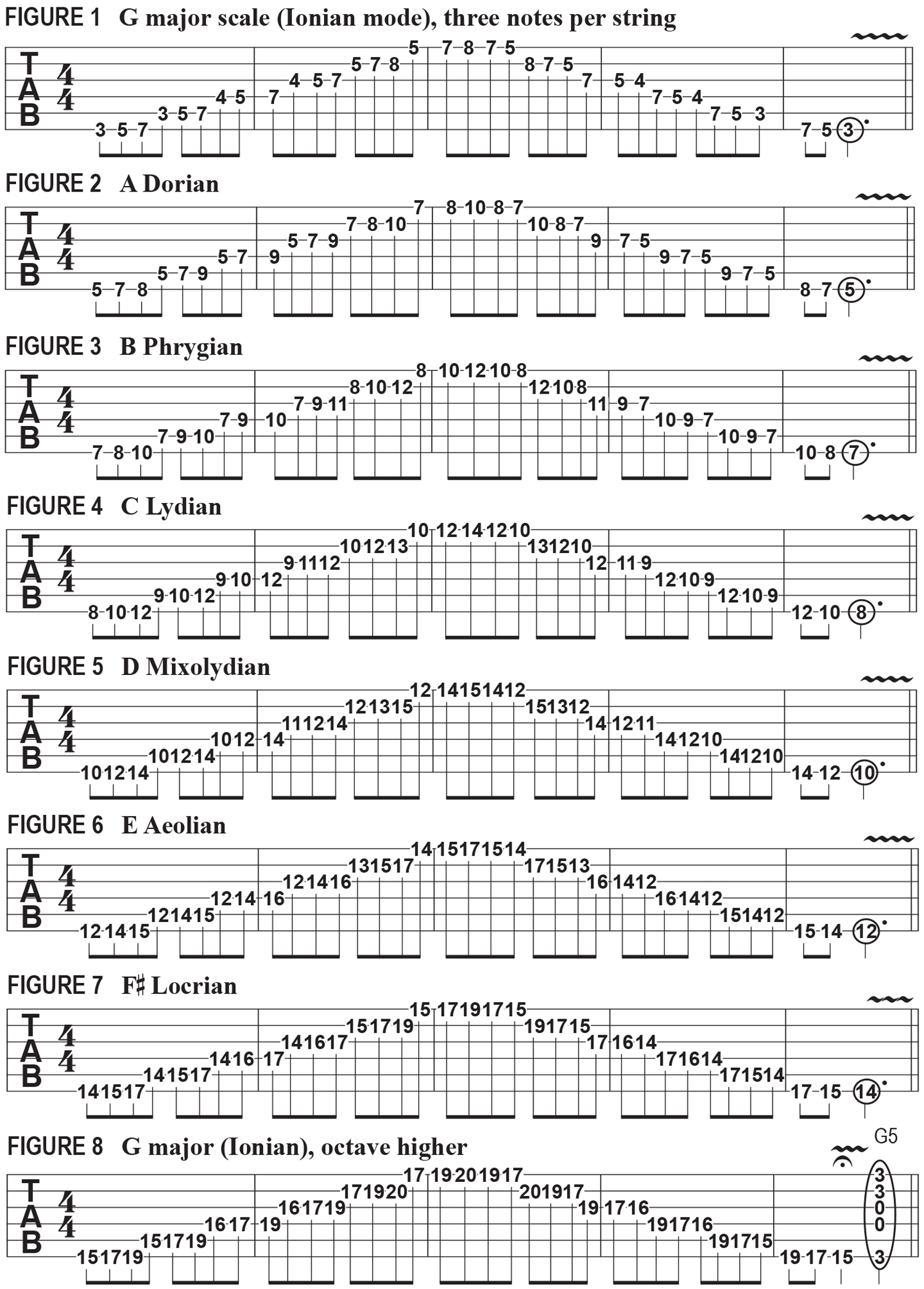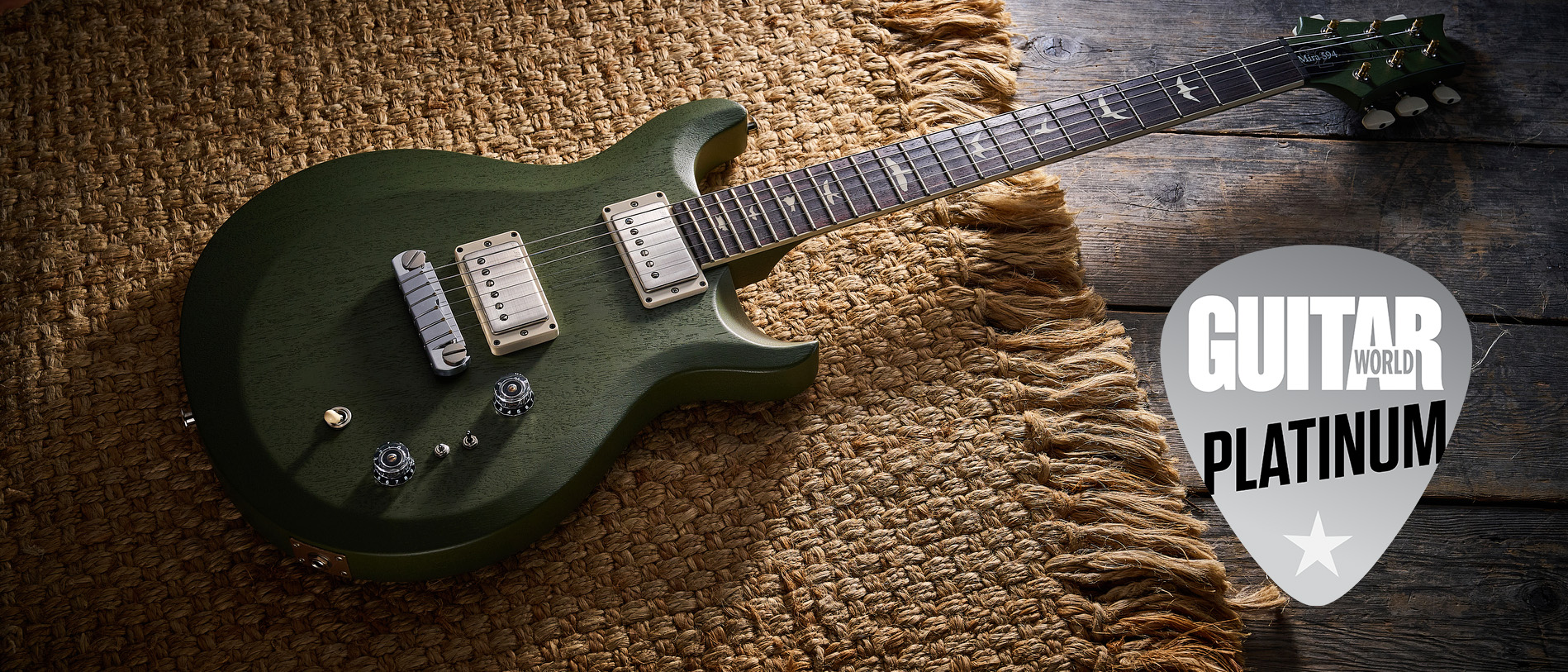Mastering the Modes of G Major with Three Notes Per String
This approach offers an economical way to cover a lot of fretboard ground while broadening the availability of notes within a given position.
An effective way to master scales and modes on the guitar is to practice playing them three notes per string. In my experience, this is something many lead guitarists don’t put as much time into as they probably should. I find this approach offers an economical way to cover a lot of ground on the fretboard while broadening the availability of notes within a given position.
A good place to start is with the seven diatonic modes of the G major scale (G A B C D E F#), played three notes per string. Each mode is built from a different note, or degree, of the scale: in FIGURE 1, we have the G major scale, also known as the G Ionian mode, starting on the low E string’s third fret. On the bottom two strings, the notes fall at the third, fifth and seventh frets, and I like to fret these notes with my first, second and fourth fingers.
The notes on the middle two strings fall at the fourth, fifth and seventh frets, and I employ the same fingers, moving my index finger up one fret. The notes on the top two strings fall at the fifth, seventh and eighth frets, so I shift up to fifth position and use my first, third and fourth fingers to fret these notes. Play this pattern repeatedly, ascending and descending, and be sure to memorize it.

Now, if we were to play the G major scale starting on the second note, A, up to A one octave higher, that gives us the A Dorian mode (A B C D E F# G). FIGURE 2 illustrates A Dorian, played three notes per string, starting on the low E string’s fifth fret. Although A Dorian comprises the same notes as G Ionian, the difference lies in the way one orients them. With G as our root, or “one,” a 1 3 5 7 chord or arpeggio based on this scale results in the notes G B D F#. Played together, these notes form a Gmaj7 chord. With A as our root, a 1 3 5 7 chord or arpeggio yields A C E G, which form an Am7 chord or arpeggio.
We can continue the process by moving up to the third degree of the G major scale, B, and start from there, as shown in FIGURE 3. Thinking of B as our root note, we now have the B Phrygian mode. Playing 1 3 5 7 within this scale results in the notes B D F# A, which is a Bm7 chord or arpeggio. FIGURES 4–7 take us through C Lydian, D Mixolydian, E Aeolian and F# Locrian, respectively, and FIGURE 8 shows the G major scale played 12 frets and one octave higher that our starting position.
Memorize all these patterns, then try shifting them up and down the fretboard to different keys.
All the latest guitar news, interviews, lessons, reviews, deals and more, direct to your inbox!
